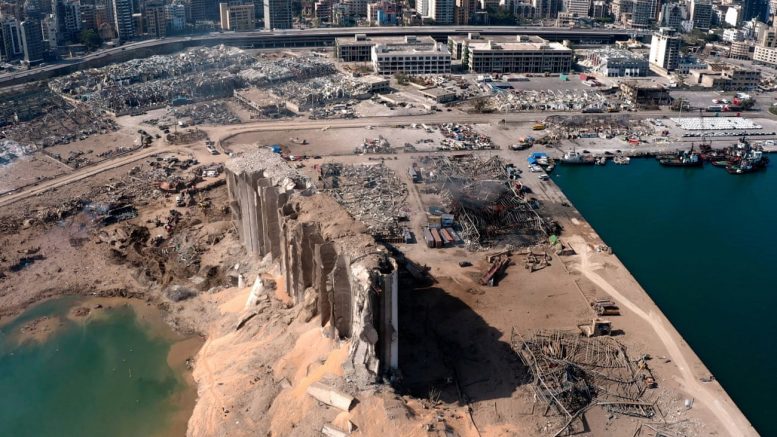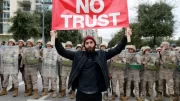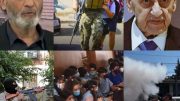Lebanon is going through some tough times right now with its economic and political meltdown. The corrupt ruling class simply won’t let go of power or their corrupt ways and will stop at nothing to prevent the reformists from fixing the country.
One year on from the August 4th 2020 Beirut port explosion, many have been asking questions as to how it happened and why no one has been held accountable yet. Let us look at the timeline of events that lead to this tragedy:
September 2013, the Rhosus, a Russian-owned, Moldovan-flagged merchant vessel departs from Georgia to Mozambique carrying 2,750 tons of ammonium nitrate.
October 2013, the ship makes an out of the way stop in Beirut, Lebanon. It is not clear why this stop was made given that Cyprus and many other ports would have been closer than Beirut. Some sources suggest it was technical failure, others suggest the captain wanted to add additional cargo to make the trip more profitable.
At this time, those in charge of the related files were:
- President: Michel Suleiman
- Prime Minister: Najib Mikati
- Finance Minister: Mohammad Safadi closely aligned with Mikati and Saad Hariri’s Future Movement
- Minister of Public Works & Transport: Ghazi Aridi who belongs to the Progressive Socialist Party led by former warlord Walid Jumblatt
- Army Commander: Jean Qahwaji

(Left to right) Suleiman, Mikati, Safadi, Aridi, Jumblatt, Qahwaji
The ammonium nitrate was unloaded and stored in Hangar 12 of Beirut’s Port along with other dangerous and volatile materials. In the next 7 years, letters warning of the danger of the ammonium nitrate from a number of low level and mid-level employees in the Customs and Security apparatuses in the port were falling on deaf ears.
February, 2014 A new government was formed and those in charge were:
- President: Michel Suleiman
- Prime Minister: Tammam Salam
- Finance Minister: Ali Hassan Khalil who belongs to the AMAL Movement led by former warlord Nabih Berri (who remains Lebanon’s speaker of parliament since 1992)
- Minister of Public Works & Transport: Ghazi Zaiter who belongs to the AMAL Movement led by former warlord Nabih Berri (who remains Lebanon’s speaker of parliament since 1992)

(From left to right) Suleiman, Salam, Khalil, Zaiter, Berri
October, 2016 Another Government was formed under a new President.
- President Michel Aoun
- Prime Minister Saad Hariri of the Future Movement
- Finance Minister: Ali Hassan Khalil who belongs to the AMAL Movement led by former warlord Nabih Berri (who remains Lebanon’s speaker of parliament since 1992)
- Minister of Public Works & Transport: Youssef Finianos who belongs to the Marada Movement led by former warlord Sleiman Frangieh

(From left to right) Aoun, Hariri, Khalil, Berri, Finianos, Frangieh
It should be noted that the Future Movement, Progressive Socialist Party, AMAL and the Marada Movement have been in power since the end of Lebanon’s civil war in 1990. They have presided over Lebanon’s gradual decline economically, sociality and financially through institutionalized corruption and all were chafing at President Aoun’s anti-corruption drive.
June, 2019 When reports highlighting the mismanagement and corruption in Lebanon’s port started to emerge, Finance Minister Ali Hassan Khalil invited cameras to film him walking through the Port. The following month, then Prime Minister Saad Hariri, accompanied by then Minister of Public Works & Transport Youssef Finianos likewise conducted the same media stunt with the message going out as “there is nothing to see here, all is fine”.
As the New York Times accurately stated, “Fifteen tons of fireworks. Jugs of kerosene and acid. Thousands of tons of ammonium nitrate. A system of corruption and bribes let the perfect bomb sit for years.”
October 2019, street protests erupt all over Lebanon as a result of the deteriorating economic situation and rampant corruption. Hariri resigns to be replaced months later by the government of Hasan Diab.
January, 2020 The Diab government is sworn in and was more receptive to the President’s much needed reform drive. A Forensic Audit of Lebanon’s institutions for the last 40 years starting with the Central Bank was finally moving forward despite years of stalling and obstruction.
January, 2020 Reports emerged that there was a hole in Hangar 12 and security of the highly volatile ammonium nitrate was compromised. Prosecutor General Judge Ghassan Oweidat somehow knew of this and issued orders for the “unguarded” hole in the Hangar’s southern wall to be covered up. (This is the same Judge Ghassan Oweidat that was appointed by the Hariri camp and has recently been issuing arrest warrants against activists who have been asking him to prosecute at least 35 corruption cases he has been sitting on for years).
July 20th, 2020 Lebanon’s Higher Defense Council informed President Aoun that there were dangerous materials in Beirut’s Port. He immediately ordered military and security agencies to do “what was needed” in order to remove them safely; as Beirut’s port is surrounded by densely populated neighborhoods in the nation’s capital.
August 4th, 2020 Just over 2 weeks after President Aoun’s order for the safe removal of the ammonium nitrate from the port, a fire breaks out in Hangar 12 at 5.40 pm and begins to spread. Exactly how and where it started is not clear. At exactly 6.08 pm one of the world’s biggest-ever, non-nuclear explosions destroys much of Beirut’s port and devastates swathes of the capital. The huge explosion leaves more than 200 dead, and injures over 6,500 and leaves hundreds of thousands homeless.
August 5th, 2020 The name of Judge Ghassan Oweidat surfaces again to take control of the investigation with the usual political wrangling and horse trading the Lebanese people have grown accustomed to since the existing ruling class took control in 1990.
Augusts 6th, 2020 The Military Court’s Government Commissioner Judge Fadi Akiki ordered the detention of 16 people, including the head of Beirut Port Hassan Koraytem. Their assets have been frozen and all have been banned from traveling.
13th August 2020, The Supreme Council of the Judiciary accepted the appointment of an investigating judge Fadi Sawan. The decision had been made by the caretaker Minister of Justice Marie-Claude Najm (who is close to the President), after contentions with the Higher Judicial Council headed by Oweidat. Two judges named by the Justice Minister had already been rejected until Oweidat relented to allow Judge Sawan to proceed.
7th October, 2020 An FBI report estimates the amount of ammonium nitrate that exploded was 552 tonnes, less than a fifth of the original cargo that was unloaded. There is speculation that some were sold on the black market by the corrupt ruling class that allowed it into the country. Other reports suggest it was being smuggled to Syria to assist terrorist and opposition groups in conflict with the Syrian government.
February 2021, Judge Sawan was removed from the case as a result of requesting former Ministers Zaiter, Khalil and Finianos for questioning. The first two are part of Lebanon’s Parliament Speaker Nabih Berri’s Amal Movement, seen by many as the godfather of Lebanon’s corrupt ruling class. Finianos is aligned with the Marada movement lead by Frangieh, a minor player in Lebanese politics and closely aligned to Berri.
19th February, 2021 Judge Tarek Bitar was approved to take over the investigation.

(From left to right) Najm, Oweidat, Sawan, Bitar
Bitar has recently come under criticism from much of the old ruling class for continuing the investigation without political interference. President Aoun on the other hand has put himself at the disposal of the Judiciary to testify before Judge Bitar hoping the rest of the political class would follow suit.
One year on from the explosion, what is know so far is this:
- 219 people killed
- 6500 injured
- Tens of thousands remain homeless
- The ancient capital of Beirut was destroyed.
- Reforms have continued to stall.
- Forensic Audit of Lebanon’s Central bank and Government accounts is also stalled.
We hope that justice can be served for the victims of the port explosion and all of Lebanon.






Be the first to comment on "One year on, what we know about the Beirut Port explosion (timeline & video)"